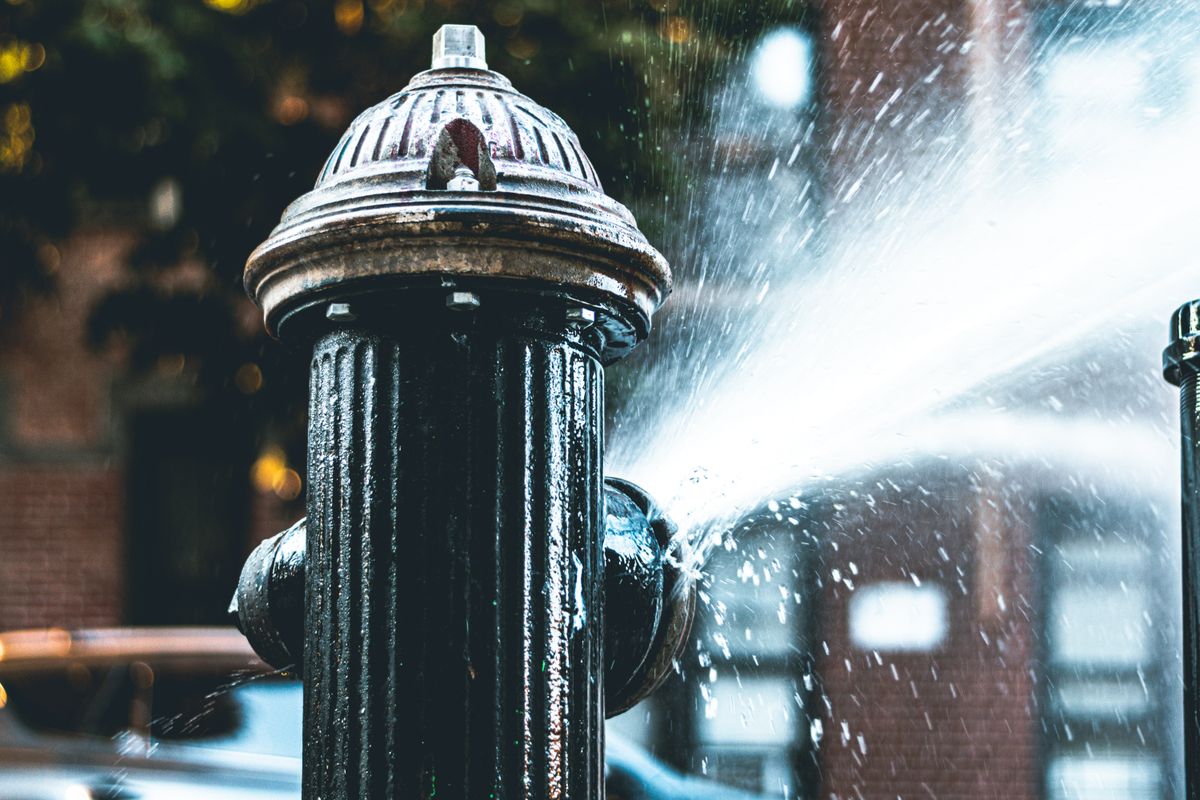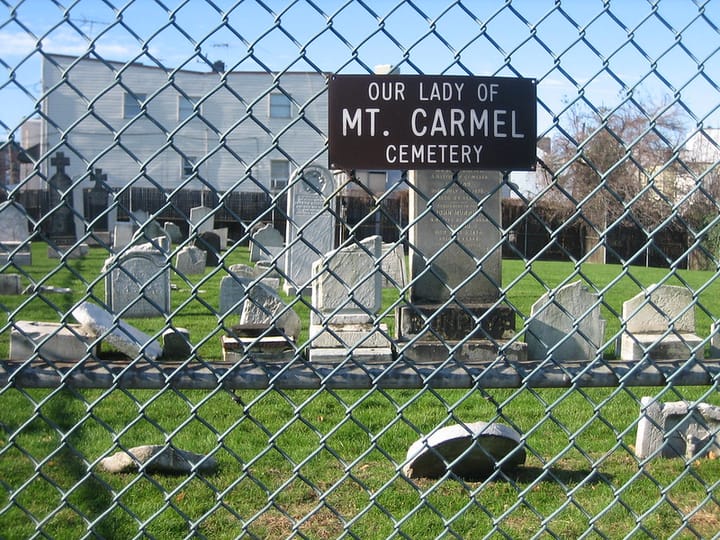The water from a fire hydrant looks so clean and refreshing. Should you drink it?
One hydrant hydration fan says: “If I see one, I wouldn't hesitate to fill up my water bottle with it.”

By Tim Donnelly
Last July, Wally Santos was hot and sweaty after playing basketball in Hunts Point and taunting younger guys about how they had been, in his words, traumatized on the court by a 62-year-old man.
He was craving a drink and didn’t have any cash to grab one from the store. That’s when he saw hydration nirvana: an open fire hydrant, spilling its liquid gold all over the curb.
“I said, ‘look at that, there’s my Poland Springs,’” he told The Groove this week. He bent down and scooped the water from the hydrant from his hands into his mouth, and beat his chest in triumph afterwards.
“Hey millennials, this is the way we used to do in the 70s and 80s,” he joked, in his gravelly Bronx accent, in a video he posted to TikTok. “We didn’t have that bottled water shit. We were men.”
The video got over 1.5 million views. Commenters from around the world were a little aghast. Most were anti-Boomer jokes, along the lines of: “They always return to their lead.”
@mr.positivesarmy #onthisday #1million views #generationx #generationz #millennials been a year but this video did 1.1 million views. Just having fun take it eze
♬ original sound - Wally Santos
Santos loves guzzling fire hydrant water. He’s posted several videos about it since, including one of him gleefully filling up a plastic bottle from a dribbling hydrant. (Ragging on millennials is a running bit, if a little outdated. But Santos — a dry cleaner who uses his platform to spread irresistibly charming “only in New York” positive vibes, is clearly just bustin’ chops here.)
“The water is delicious, it was cold,” he told me. “If I see one, I wouldn't hesitate to fill up my bottle with it.”
This is a question I’ve long wondered while biking through our urban heatscape on hot summer days and seeing the glorious spray of an open fire hydrant cresting over a street: Can I drink it?
New York City tap water is well heralded for being among the best in the world. Occasionally there is skepticism about this fact but I implore anyone who thinks this way to visit literally any other city and realize how little water they drink at all.
As New Yorkers, we should never take this fact for granted; we should scoff at restaurants that offer anything other than NYC tap and mock anyone who contributes to our huge plastic bottle waste problem in this city. And don’t even get me started on Liquid Death, a silo of dull factory water, which tastes more like lead than any water I’ve ever ingested. Tap water is the champagne that keeps this city’s party going. Maybe hydrant water is the High Life for hot summer days?
Lead worries
However, lead in the pipes that deliver the water is a major concern. A report released last month found that as many as one in five New Yorkers — 900,000 people — may still be getting water from lead pipes.
Fire hydrants might look like lead but they are made of cast iron. Cast iron can contain some lead, but how much is unclear. The hydrants can also be covered in chipped paint, rust and an amount of dog urine that would be truly staggering if we could ever measure it.
A decade ago, the Environmental Protection Agency tried to stop people from drinking from fire hydrants. In 2013, the agency announced that the Reduction of Lead in Drinking Water Act passed two years before should apply to fire hydrants. If enacted, that could have taken 1,300 hydrants in the city out of commission.
New York Sen. Chuck Schumer — only three years off his campaign to ban people from drinking Four Loko — called the ruling “absurd.” Congress came to a rare bipartisan agreement to exempt our existing hydrants, adding them to an exemption list that includes shower heads and bathtub parts.
"Our federal EPA wants the city to throw out over $1 million of fire hydrants because they contain some lead and people might drink from them,” Schumer said at the time. “That makes no sense whatsoever.”
The city’s then-Department of Environmental Protection Commissioner Carter Strickland agreed, saying the notion that New Yorkers could get lead poisoning from hydrants is "not based on sound science.” Prolonged exposure, EPA critics said, was the real risk.
"I don't know a single New Yorker who goes out to their fire hydrant every morning and brushes their teeth," Schumer said. Kids playing in hydrants in the summer shouldn’t worry, he said. Flushing the hydrant, politicians agreed, should be sufficient to ensure that lead and other contaminants are gone.
But the director of the Mid-Atlantic Center for Children's Health and the Environment was more wary, telling The Daily News then that "no amount of lead is safe” for people to ingest.
Water water everywhere
The water from a hydrant, at least, is the same famous New York water that comes out of your tap. The real tragedy of our delicious drinking water supply is that there are never enough places to refill your water bottle with it. In 2018, two designers proposed a project that would create new water fountains for humans, dogs and birds by attaching extensions onto the city’s hydrants. The project never moved beyond the idea stage.
Even some of the public water fountains that are working have a stream so pitiful that it’s nearly impossible to fill up a bottle from it, or drink without dangling your lips close to the spout. The lack of water fountains here is so dire that some tech dunce once tried to sell subscriptions to NYC tap water.
As to whether hydrant water is safe to drink right now, I tried to find an official answer, but no one seems to know for sure. The FDNY press office directed me to the Department of Environmental Protection, which did not return requests for comment. No information or guidance can be found on any city website about it. A website called Firefighternow.com says it is safe; others say you might want to hold off to avoid the sediment and rust that can settle in there. At the very least, water experts advise letting a hydrant run for a while before you take a sip, to flush it out.
(8/4 update, with a little more definitive science: Sarah Meyland, a member of the state's Drinking Water Quality Council and the director of Center for Water Resources Management at the New York Institute of Technology, emailed me Friday to say that the water isn't risky, and confirmed it's the same water that comes to your faucet.)
Taste test
In our newsletter last week (hey, subscribe if you haven’t already because you miss stuff like this!) we asked Groove readers whether you’d drink from an open hydrant. Almost everyone who responded said they would.
“100% yes,” one reader wrote. “I need to give my immune system something to do every now and then.” Another said: “Perhaps a sip to slake my thirst. No more than that.” Someone else responded: “Have done, would do again. It's the same as the faucet.”
Unable to find a water scientist to answer the question for me, I had no choice but to test this means of refreshment myself. I found an open hydrant on Fulton Street and Bedford Avenue the other day, cupped my hands under its flowing bounty, and slurped.
The taste was distinctly not good. It was warm, dull and a touch grassy; words I would never use to describe my beloved sink water (to be fair, this was an open hydrant used by a construction site, perhaps not the most pristine source). I did not feel well immediately afterwards and found myself quickly Googling the symptoms of lead poisoning: high blood pressure, difficulties with memory, headaches, reduced sperm count. OK, I probably did not have lead poisoning after one sip, but the flavor vs. sperm count factor really weighed on me.
Santos said I just didn’t find a good enough hydrant.
“You let that flow, I swear man, every kid remembers how delicious and cold the water was. It was freezing cold,” he said.
In all his years of slurping from hydrants, he’s never worried about lead or other contaminants.
“I think that’s a misconception,” he said. “I’m 63, I'm still here.”
If it were a real risk, he figures the FDNY wouldn’t open the hydrants at all in the summertime.
“That water is the same water that goes into our homes,” he said. “New York City happens to have the best water in the United States.”
So should you drink it? After my research, I can’t give definitive advice. But I am tempted by Santos’s advocacy and the undeniable appeal of blasting fire hydrant water straight into my face in the next scorching heat wave.
The next time I see a glittering arch of hydrant water spraying over a street on a hot summer day, I’ll stop to give it another drink. It beats Liquid Death any day.





Comments ()